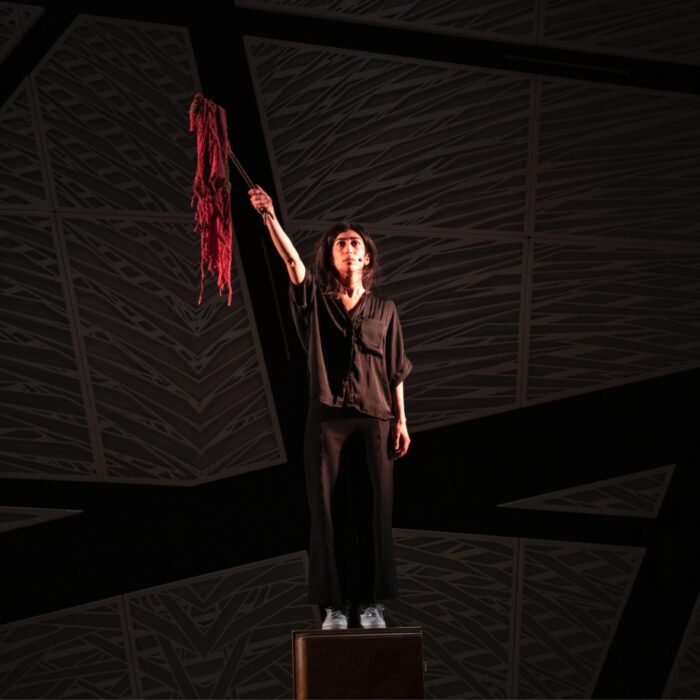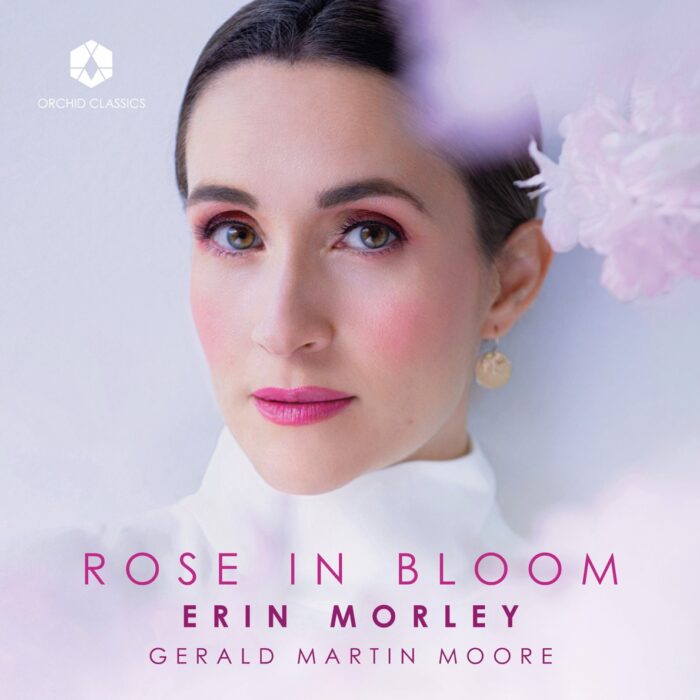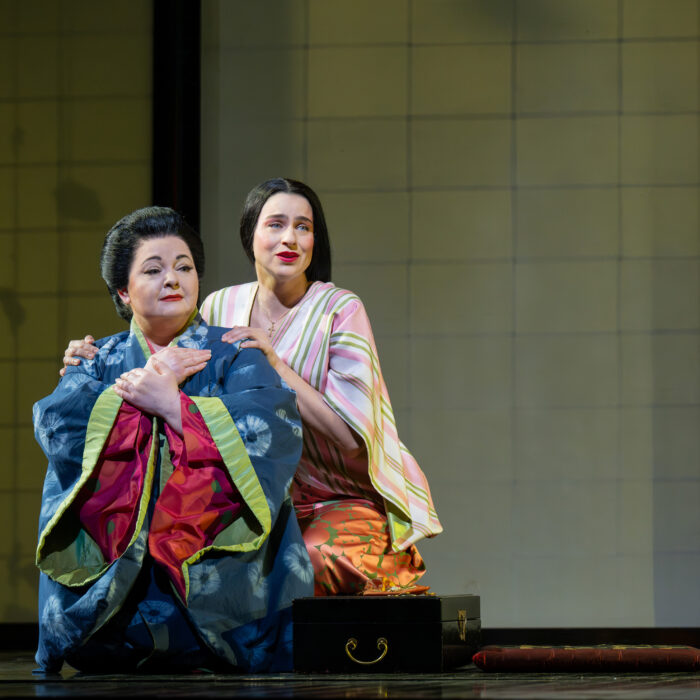
CD Review: Franco Fagioli’s ‘Veni, Vidi, Vinci’
Fagioli & Vinci: A Winning Combination
By Alan Neilson(Photo: Igor Studio)
The countertenor Franco Fagioli’s new CD, entitled “Veni, Vidi, Vinci,” turns the spotlight onto the now relatively ignored composer Leonardo Vinci.
During the early 18th century Vinci was a leading figure in the Neapolitan school; he is known to have influenced the works of Pergolesi, Hasse and Handel, collaborated closely with Metastasio, worked with the leading singers of the day and his operas were in high demand in Naples, Rome and other Italian cities. The English critic Charles Burney, during a visit to the peninsular, noted, “Italians did not want to see again any piece that they had already seen, unless it is some excellent opera by Vinci.”
By the age of 36 Vinci was dead.
Although he composed around 40 operas between 1719 and 1730, the year of his death, today, even avid opera-goers would be hard pushed to name even one of Vinci’s operas. Performances of his works are relatively rare and often confined to specialist venues.
On this disc Fagioli presents a selection of 12 arias from his operas, two of which are prefaced by recitatives.
Shining the Spotlight
The arias are notable for their engaging, yet often simple melodies characterized above all by an elegance and refinement which was very much the fashion of the day. If the orchestral accompaniment is often relatively uncomplicated, it is no less beautiful for the fact, and allows for rhythmic flexibility in the melody, and for the voice to assume the primary position, providing Fagioli with the ideal means to show off his much admired vocal talents, whilst simultaneously providing Vinci with exposure of his own musical skills in writing for the voice.
The arias selected cover a variety of emotional states, ranging from love and hope to regret, shame, fear, guilt and anger, set within a variety of contexts, including the military and a storm at sea, the metaphorical and the commonplace. Fagioli takes full advantage of every opportunity, dazzling the listener with his explosive coloratura, vocal flexibility, subtle and not so subtle ornamentations, rich coloring, technical precision and carefully crafted phrasing, so that each aria is fully explored and its emotional depths uncovered.
However, the first thing about Fagioli’s interpretation which strikes the listener is the raw energy he injects into his singing, something which from a lesser singer would likely undermine the whole presentation, and work against the necessary elegance and simple beauty expected.
There is the occasional unevenness in Fagioli’s singing which you can hear as he forces himself through difficult embellishments or extended coloraturas as he lets loose with an abandonment which mesmerizes, as in “Nave altera, che in mezzo all’onde” from the opera “Grismondo re di Polonia,” or “Sull’aiuto del suo amor,” from “L’Ernelinda.” He leaps full octaves, dances across the notes, embarks on dazzling displays of vocal versatility. Sometimes it comes at the cost of poor articulation and breath control, but it is a cost worth paying. It is a man living the part who is able to bring an aria alive in a way only a singer of such high quality can.
Moreover, it adds an exciting frisson to the performance; Fagioli’s high-octane interpretation clashing with the refined elegance of Il Pomo D’Oro’s accompaniment.
Of course, Fagioli is equally capable of precision and subtle nuance. “Sento due fiamme in petto,” taken from the opera “Medo,” for example, clearly illustrates his technical excellence, his delicately rendered presentation oozing style and finesse. Originally written for the great castrato Farinelli in the role of Giasone, it is a confession of his love for two women, and his inability to choose between them. Fagioli sings with a bright, fresh sound, enveloped in reflective sadness; the coloraturas are light, lilting and gently delivered, trills understated and phrasing gently molded.
Vocal Color
One of Fagioli’s distinctive characteristics which sets him apart from most other countertenors is the vocal coloring he is able to generate.
In the aria “Gelido in ogni vena,” from “Siroe re di Persia,” King Cosroe has had his son executed, and is now suffering from guilt and the terror of being visited by his ghost. Unbeknownst to him, however, his son is alive and well.
Fagioli singing with a bright, sad, sullen lilt, suddenly darkens the voice on the line “m’ingombra di terror,” highlighting his inner fears. Moreover, each time the line is repeated Fagioli subtly alters the coloring, and accents the words with different levels of stress; this is not a robotic response, but one that brings Cosroe’s emotions truly alive.
Again, in “Scherzo dell’onda instabile” from “Medo,” Fagioli use his colorful pallet to depict the stormy seas, the colors of his voice surging one way, then the other in a depiction of the “raging waves.”
In fact, many of the arias allow Fagioli to indulge in well-constructed word painting. The opening track, “Sembro quell’usignolo” from “Il trionfo di Camilla,” tells of a nightingale that is snared by a hunter, but continues to live in hope, and in doing so betrays his own heart. In an elegantly crafted presentation Fagioli captures the bird’s panic as it tries to escape the hunter, its screeching and the anxious flapping of its wings realized through his short rapid trills and coloratura.
Another nightingale makes an appearance in “Quell’usignolo” from “Grismondo re di Polonia.” The aria, with its dance like rhythms, contrasts the sadness of the bird without a mate to his happy heart when he finds love. The song of the nightingale is once again captured in Fagioli’s trills, ornamentation and coloratura, and delightfully mimicked by recorders in the orchestral ensemble.
Fagioli gives thought to the smallest of details so that every phrase is formed to draw out the meaning of the text and music. The smallest of ornamentations, accents and dynamic shadings and coloring are all neatly crafted.
The two tracks of recitative provide excellent examples of how he brings the text alive.
The first is an accompanied recitative, “Ove corri? Ove vai?” from “L’Ernelinda” in which Vitige despairs at the thought that the woman he loves is now his enemy and the man he thought of as his friend is his rival. Fagioli provides a strident interpretation, in which his despair is only one short step away from self-loathing, as he almost spits out each heavily accented line staccato, which in the final three lines changes, as hope lifts his mood, and the voice calms.
Likewise in “O da me troppo offesa,” from “Medo” where Giasone ponders upon his love for two women, Fagioli captures his feelings with a passionate rendition, which significantly changes in the final line which reveals that his greater concern is for his own heart, the voice once again calming, but sweetened with a sentimental veneer.
The two recitatives combined last for only approximately 2 minutes 30 seconds, but Fagioli still manages to engender them with such emotional depth and nuance.
Credit must also go to the wonderful Il Pomo D’Oro ensemble whose lively playing did so much to make this disc such a success. The ensemble’s elegant and refined sound and rhythmic versatility wedded to the beautiful textures was a perfect match for, and on occasions foil to Fagioli’s testosterone fuelled interpretations.
Nevertheless it is Fagioli who takes centre stage. He is certainly one of the world’s best countertenors, and this disc only reaffirms his position. Many opera-goers find the voice of a countertenor disagreeable, and to the extent it sounds unusual or faux, especially on first hearing, it is understandable.
Maybe this disc can act as antidote for there is nothing false about the dramatic impact which Fagioli is able create with his singing and, moreover, he sings with a beauty that would be difficult to deny.
It is also a recording that suggests more attention should be given to Vinci; his arias overflow with engaging and dramatic melodies. Together Fagioli, Vinci and Il Pomo D’Oro have created a five star recording.



